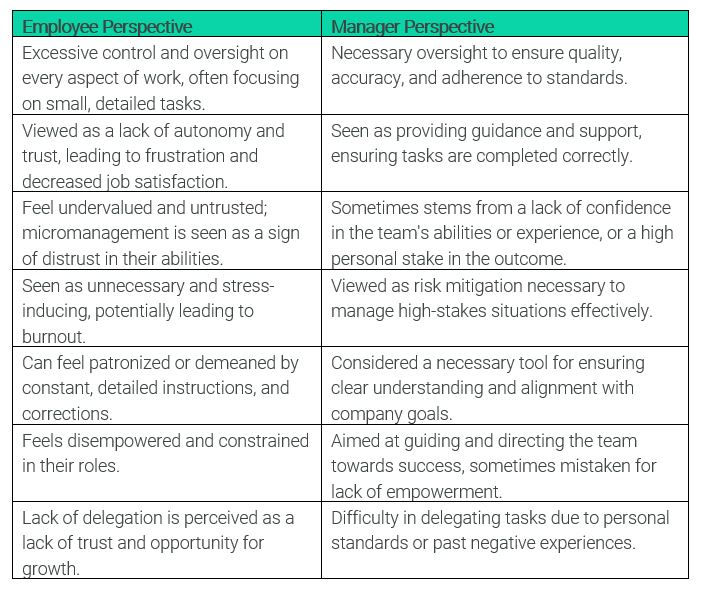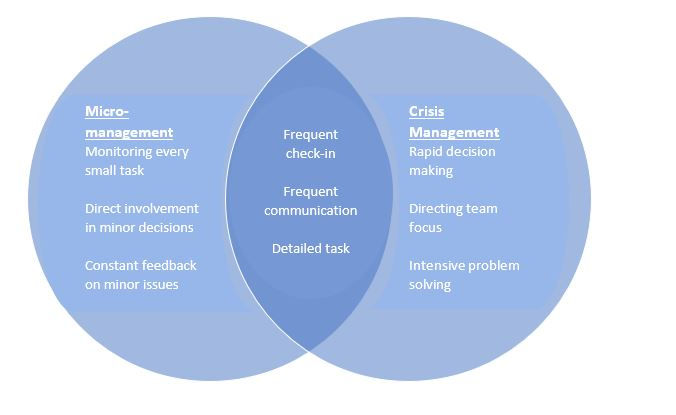Managing or Micromanaging? Walking the Leadership Tightrope
- Beth Estrada

- Jan 2, 2024
- 3 min read
Updated: Jan 7, 2024

Leadership is a journey filled with its fair share of tightropes, and one of the trickiest to walk is that fine line between being a guiding force and micromanaging. As a leadership coach with over two decades of experience leading both small and large teams, navigating their unique dynamics and challenges, I’ve encountered this dilemma time and again. It goes beyond just honing your management style; it's about deeply understanding how your team and fellow managers perceive and respond to that style. This level of insight is what turns good leaders into truly great ones.
Understanding Micromanagement
Imagine micromanagement as a double-edged sword in the office. For the team, it feels like being under a relentless spotlight, with every small task and decision scrutinized. This constant oversight can lead to a sense of lost freedom, making work feel more like a chore than a passion. On the other side, managers often see micromanagement as their secret weapon to maintain excellence and prevent problems before they arise. It's a tightrope walk between ensuring quality and stifling creativity. This contrast in viewpoints is a real challenge, and it underscores the art of leadership – striking the right balance between guidance and autonomy.
Let’s explore examples of this disconnect and its impact on different facets of the manager-employee relationship.

Micromanagement v. Crisis Management
Crisis management is all about how a business responds to unexpected, often disruptive events. It's the art of dealing with emergencies and steering the ship through rough waters. Whether it's a natural disaster, a PR scandal, or a sudden market shift, crisis management is about quick thinking, swift action, and clear communication to mitigate damage and get back on track.
Now, let's mix this with micromanagement. Imagine our Venn diagram where these two worlds overlap. It's a complex dance. In the thick of a crisis, the need for regular check-ins and pinpoint instructions is undeniable. But here's where it gets interesting – these very actions, vital in emergencies, might be seen as overbearing in everyday business. It's a fascinating shift. This blend of crisis management and micromanagement really shines a light on how context is king when it comes to leadership styles.

Gallup's Insights on Micromanagement
Some leaders steer clear of actions that might be seen as micromanaging, wary of its negative implications, while others lean into a high-accountability approach, viewing it as integral to their deep engagement. However, Gallup's research¹ brings a fascinating twist to light – in numerous workplaces, constructive feedback from managers is surprisingly scarce. Their surveys indicate that many employees find themselves receiving little guidance or input, resulting in uncertainty about their manager's awareness of their work. This scarcity of feedback, interestingly, can be as challenging as excessive oversight, highlighting the intricate and complex nature of the micromanagement issue.
Leader Insights
While delving into the complex topic of micromanagement, I spoke with tenured leaders from various departments to glean their perspectives. Heather Walters, known for effectively co-managing a large revenue cycle project, shared her valuable experiences and perspectives with me. She highlighted an important aspect of leadership, “Managing [critical] issues is not “day-to-day” managing; it's about intervention when a breakdown is discovered,” underscoring the need for what might resemble micromanagement in certain scenarios. Heather also stressed the importance of balancing autonomy with accountability in her leadership style. She believes in giving highly accountable assets the autonomy to apply their expertise saying, “Letting them have their space is key.” Her approach is all about investing time in building trust with her team, pinpointing the delicate act of balancing guidance with independence.
Nena Stanbery, who leads a large accounts receivable division, faces the unique challenge of balancing rapid resolution with strict regulatory and compliance standards. When discussing the fine line between necessary oversight and micromanagement, Nena shared her philosophy: “My motto is... we succeed together, and we fail together. I make sure my leaders keep me updated, so I'm not caught unprepared. It’s not about micromanaging, but about not being surprised if I’m asked about something,” she elaborates, emphasizing proactive communication as a cornerstone of her leadership.
Like Heather, Nena’s approach extends beyond mere oversight. She believes in fostering empowerment and trust within her team. “I’m involved, joining meetings, and getting to know associates. I give praise, celebrate successes, and involve them in developing plans for failures. Their voices matter,” she explains. This hands-on yet inclusive approach reflects her commitment to both the team's success and their individual growth.
Conclusion
Mastering the balance between effective management and micromanagement is a critical skill in modern leadership. It’s about finding the sweet spot where you’re engaged enough to guide but not so much that it stifles autonomy. Knowing when to step in and when to let your team lead is what makes the journey of leadership both challenging and rewarding. This balance, critical in evolving from a good leader to a great one, underscores the dynamic nature of leadership in today's complex work environments.
¹ Gallup. (2020). The Ultimate Guide to Micromanagers: Signs, Causes, Solutions. Retrieved from https://www.gallup.com/workplace/315530/ultimate-guide-micromanagers-signs-causes-solutions.aspx




Comments